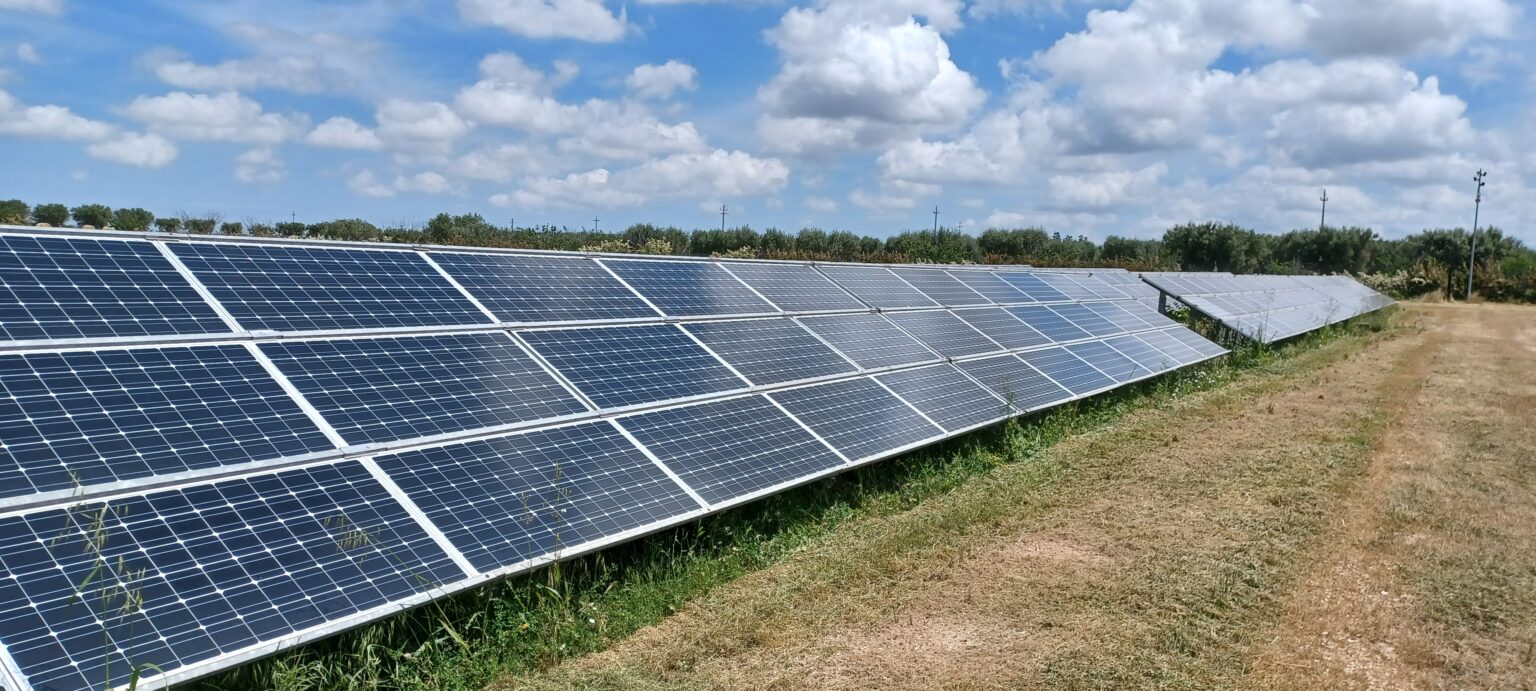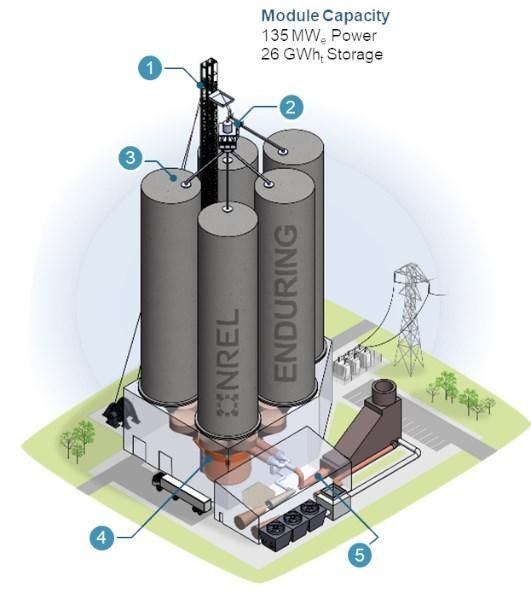HONEYWELL AND LS ELECTRIC ANNOUNCE GLOBAL PARTNERSHIP TO ACCELERATE INNOVATION FOR DATA CENTERS AND BATTERY ENERGY STORAGE SYSTEMS – PR Newswire

Strategic Partnership Report: Honeywell and LS ELECTRIC Collaboration for Sustainable Infrastructure
Executive Summary
On October 8, 2025, Honeywell and LS ELECTRIC announced a global strategic collaboration. The partnership is focused on developing and marketing integrated hardware and software solutions for data centers and commercial buildings. The primary objectives are to enhance operational efficiency, improve power resiliency, and significantly contribute to the achievement of several United Nations Sustainable Development Goals (SDGs) by addressing the growing energy demands of digital infrastructure.
Core Objectives of the Collaboration
- Integrated Power and Control Solutions for Data Centers: To develop intelligent power management systems that integrate critical power distribution with building management functions. This aims to prevent costly downtime and optimize energy consumption in an industry projected to dramatically increase its global electricity usage.
- Advanced Battery Energy Storage Systems (BESS): To jointly create highly integrated, grid-aware BESS for commercial and industrial buildings. This initiative will establish microgrids to improve energy resiliency, manage demand, and support grid stability.
Contribution to Sustainable Development Goals (SDGs)
This partnership directly supports global sustainability targets by focusing on energy efficiency, resilient infrastructure, and climate action.
-
SDG 7: Affordable and Clean Energy
- The collaboration promotes energy efficiency in data centers, which currently account for 1-2% of global electricity consumption.
- Development of BESS facilitates greater grid stability, which is essential for the integration of intermittent renewable energy sources.
- The new systems are designed to intelligently regulate energy distribution and consumption, minimizing waste and promoting responsible energy use.
-
SDG 9: Industry, Innovation, and Infrastructure
- The joint development of solutions leveraging Honeywell’s Forge AI platform and LS ELECTRIC’s power systems expertise represents a significant technological innovation.
- The partnership is focused on building resilient infrastructure by ensuring uninterrupted power for critical data centers and industrial facilities.
- It aims to upgrade industrial capabilities with smart, integrated solutions that combine building automation with power management.
-
SDG 11: Sustainable Cities and Communities
- The creation of microgrids through the BESS solution enhances urban energy resilience, providing a stable power alternative for critical buildings during periods of high demand or grid instability.
- By improving energy management in large commercial and industrial facilities, the initiative contributes to more sustainable and efficient urban infrastructure.
-
SDG 13: Climate Action
- The solutions directly address climate change by targeting the high energy consumption of the digital economy and aiming to reduce its associated carbon footprint.
- AI-driven predictive maintenance will help identify potential power quality issues early, ensuring systems operate at peak efficiency and reducing energy loss.
- The dynamic energy control software for BESS will optimize energy sourcing based on utility data and weather, further reducing reliance on carbon-intensive power generation.
Technological Framework and Market Impact
The collaboration will leverage Honeywell’s leadership in building automation and its AI-driven Forge platform alongside LS ELECTRIC’s deep expertise in power systems. The initial phase involves offering integrated switchgear and power management products. The long-term vision includes developing new electrical power monitoring systems that use AI to predict maintenance needs and intelligently manage energy distribution. This positions the partnership to deliver future-ready, sustainable infrastructure solutions that enable data centers and large building operators to achieve both energy efficiency and operational reliability, supporting global expansion into key markets, including North America.
Analysis of Sustainable Development Goals (SDGs) in the Article
1. Which SDGs are addressed or connected to the issues highlighted in the article?
- SDG 7: Affordable and Clean Energy: The article focuses heavily on improving energy efficiency and implementing intelligent power management. The development of Battery Energy Storage Systems (BESS) and solutions to “intelligently regulate energy distribution and consumption” directly support the goal of ensuring access to affordable, reliable, sustainable, and modern energy.
- SDG 9: Industry, Innovation, and Infrastructure: The core of the article is a “global strategic collaboration” to “accelerate innovation” for critical infrastructure like data centers and commercial buildings. The goal is to build “resilient” and “intelligent infrastructure” by upgrading power management systems, which aligns with building resilient infrastructure, promoting inclusive and sustainable industrialization, and fostering innovation.
- SDG 11: Sustainable Cities and Communities: The solutions described, such as creating “microgrids in critical buildings and industrial facilities” and developing “grid and building-aware battery energy storage system (BESS),” contribute to making urban infrastructure more resilient and sustainable. These technologies help manage the increasing load on the grid and improve the reliability of power in buildings, which is a key component of sustainable communities.
- SDG 12: Responsible Consumption and Production: The article highlights that data centers consume 1-2% of global electricity. By developing solutions that allow data centers “to be more efficient with energy use and storage,” the partnership directly addresses the need for more responsible consumption patterns, particularly in energy-intensive industries.
2. What specific targets under those SDGs can be identified based on the article’s content?
- Target 7.3: “By 2030, double the global rate of improvement in energy efficiency.” The article directly supports this target by stating the partnership’s solutions will allow data centers “to be more efficient with energy use” and help large building operators “achieve energy efficiency.” The entire premise is to reduce wasteful energy consumption through intelligent management.
- Target 7.a: “By 2030, enhance international cooperation to facilitate access to clean energy research and technology… and promote investment in energy infrastructure and clean energy technology.” The article describes a “global strategic collaboration” between Honeywell, a U.S.-based company, and LS ELECTRIC, a Korea-based company, to jointly develop and market advanced energy management and storage technologies. This partnership is a direct example of international cooperation to advance energy technology and infrastructure.
- Target 9.4: “By 2030, upgrade infrastructure and retrofit industries to make them sustainable, with increased resource-use efficiency and greater adoption of clean and environmentally sound technologies and industrial processes…” The collaboration aims to provide “integrated power and control solutions” and “highly integrated battery energy storage systems” for data centers and industrial buildings. This represents an effort to upgrade existing infrastructure with more efficient and intelligent technologies to improve resource (energy) efficiency and resilience.
- Target 11.b: “By 2020, substantially increase the number of cities and human settlements adopting and implementing integrated policies and plans towards… resilience…” Although the target date has passed, the principle remains relevant. The article’s focus on creating solutions that “improve resiliency” and “create microgrids in critical buildings” directly contributes to building resilience at the facility and community level against power disruptions.
3. Are there any indicators mentioned or implied in the article that can be used to measure progress towards the identified targets?
- Implied Indicator for Target 7.3 (Energy Efficiency): The article does not state a formal indicator, but it implies metrics for measuring progress. It mentions improving “operational efficiency” and making data centers “more efficient with energy use.” A practical indicator would be the reduction in energy consumption per unit of data processed or stored in data centers using these new technologies. The baseline mentioned, that data centers “consume 1-2% of global electricity production,” provides a macro-level starting point from which efficiency gains can be measured.
- Implied Indicator for Targets 9.4 and 11.b (Resilient Infrastructure): The article emphasizes avoiding “costly downtime” and improving “resiliency.” Progress towards these goals can be measured by tracking the frequency and duration of power-related downtime in facilities that adopt the new systems. A decrease in these metrics would indicate an increase in infrastructure resilience. Furthermore, the number of buildings or facilities implementing microgrids and BESS solutions as a result of this partnership could serve as a direct indicator of adoption.
Summary Table of SDGs, Targets, and Indicators
4. Create a table with three columns titled ‘SDGs, Targets and Indicators” to present the findings from analyzing the article. In this table, list the Sustainable Development Goals (SDGs), their corresponding targets, and the specific indicators identified in the article.
| SDGs, Targets and Indicators | Targets | Indicators |
|---|---|---|
| SDG 7: Affordable and Clean Energy | Target 7.3: Double the global rate of improvement in energy efficiency. | Implied Indicator: Improvement in energy efficiency in data centers and commercial buildings, measured by reduced energy consumption per unit of output (e.g., data processed). |
| SDG 9: Industry, Innovation and Infrastructure | Target 9.4: Upgrade infrastructure and retrofit industries to make them sustainable and resource-efficient. | Implied Indicator: The rate of adoption of intelligent power management systems, BESS, and microgrids in data centers and industrial facilities. |
| SDG 11: Sustainable Cities and Communities | Target 11.b: Increase the number of cities and human settlements adopting and implementing integrated plans towards resilience. | Implied Indicator: Reduction in costly downtime and improved demand management in critical buildings, indicating enhanced operational resilience. |
| SDG 12: Responsible Consumption and Production | Target 12.2: Achieve the sustainable management and efficient use of natural resources. | Implied Indicator: A decrease in the percentage of global electricity consumed by data centers through the implementation of energy-efficient technologies. |
Source: prnewswire.com

What is Your Reaction?
 Like
0
Like
0
 Dislike
0
Dislike
0
 Love
0
Love
0
 Funny
0
Funny
0
 Angry
0
Angry
0
 Sad
0
Sad
0
 Wow
0
Wow
0



















































.jpg.webp?itok=0ZsAnae9#)
























